EWBrown wrote:The latest completed project is a small 6BM8...
OK... I've got just about all the chassis work on mine done. All I have to do is figure out how to finish the wiring underneath. Any hints from the expert point-to-point builders?

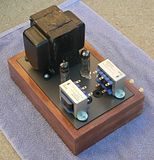
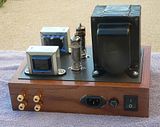

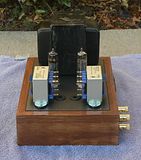

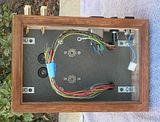
EWBrown wrote:The latest completed project is a small 6BM8...









 Those trannies could easily power 8 6BM8s and maybe even 12
Those trannies could easily power 8 6BM8s and maybe even 12  Your 6BM8 amp is the "Goliath" when compared to my tiny "David" version, which I can easily hold in one hand. (see it further down the page, along with a compact 12B4A "Darlikg Killer"
Your 6BM8 amp is the "Goliath" when compared to my tiny "David" version, which I can easily hold in one hand. (see it further down the page, along with a compact 12B4A "Darlikg Killer"
 .
.EWBrown wrote:I really like your nice wood bases and the nicely finished chassis plates.
 I thought I'd try something different this time, rather than my usual framing lumber boxes. The first draft was a bit rougher...
I thought I'd try something different this time, rather than my usual framing lumber boxes. The first draft was a bit rougher...
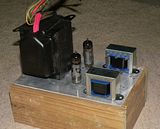

 It also took a LOT longer to warm up, and that should have been a big clue
It also took a LOT longer to warm up, and that should have been a big clue 


 .
.  The 6F3P / 6BM8s consume 780 mA, so I am exceeding teh current rating by 120 mA or 4%.. Big honkin' deal...
The 6F3P / 6BM8s consume 780 mA, so I am exceeding teh current rating by 120 mA or 4%.. Big honkin' deal... 






 I'll keep it simple, with AC filament voltage, as I've had no problems with making this operation totally hum-free.
I'll keep it simple, with AC filament voltage, as I've had no problems with making this operation totally hum-free.
EWBrown wrote:Photos of this (and my two recent 6BM8 / 6F3P builds) coming soon...



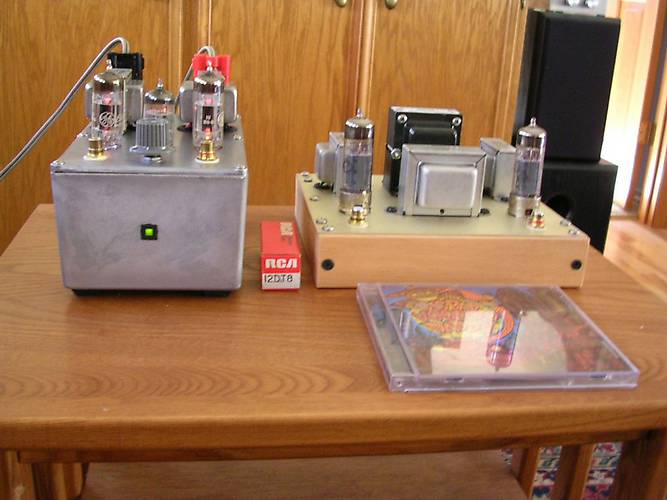
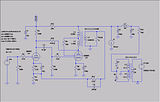





EWBrown wrote:Nothing wrong with using paralleled or series'ed resistors where needed, I've done it more than once. I just use what I have in the junque boxes

/ed B
EWBrown wrote:Two more small amps, that I completed last month.
To the right, is my compact 6F3P (Russian 6BM8) SEP/UL. It measures about 6.5 X 5.5 inches and the wooden frame is 1.5 inches high. THis also uses the Triode TF103-48-UL OPTs, The circuit is that which I described in earlier postings, with two NFB paths, the usual "global" NFB from the OPT secondary to the VA cathode, and an additional plate feedback path by means of a 1 Megohm resistor connected betwen the triode and pentode plates. This addition made a dramatic difference in the sound quality, from very good to "unbelieveably excellent" for such a simple design. It is good for about 2WPC, and I did not have any room inside fir a volume control. Compare the size of the tube box and CD to the two amps. The circuit schematic for the 6F3P amp is about 2 or 3 postings above this one.
/ed B in NC

 Both in PP and SEP.
Both in PP and SEP. 
 , but the original pentode or triode modes sound good with these tubes . Been there, done that...
, but the original pentode or triode modes sound good with these tubes . Been there, done that... katabatic wrote:what is the component labeled I1, a bit above the power transformer in the schematic? The circle with the kind-of-down-arrow in it
Users browsing this forum: No registered users and 18 guests